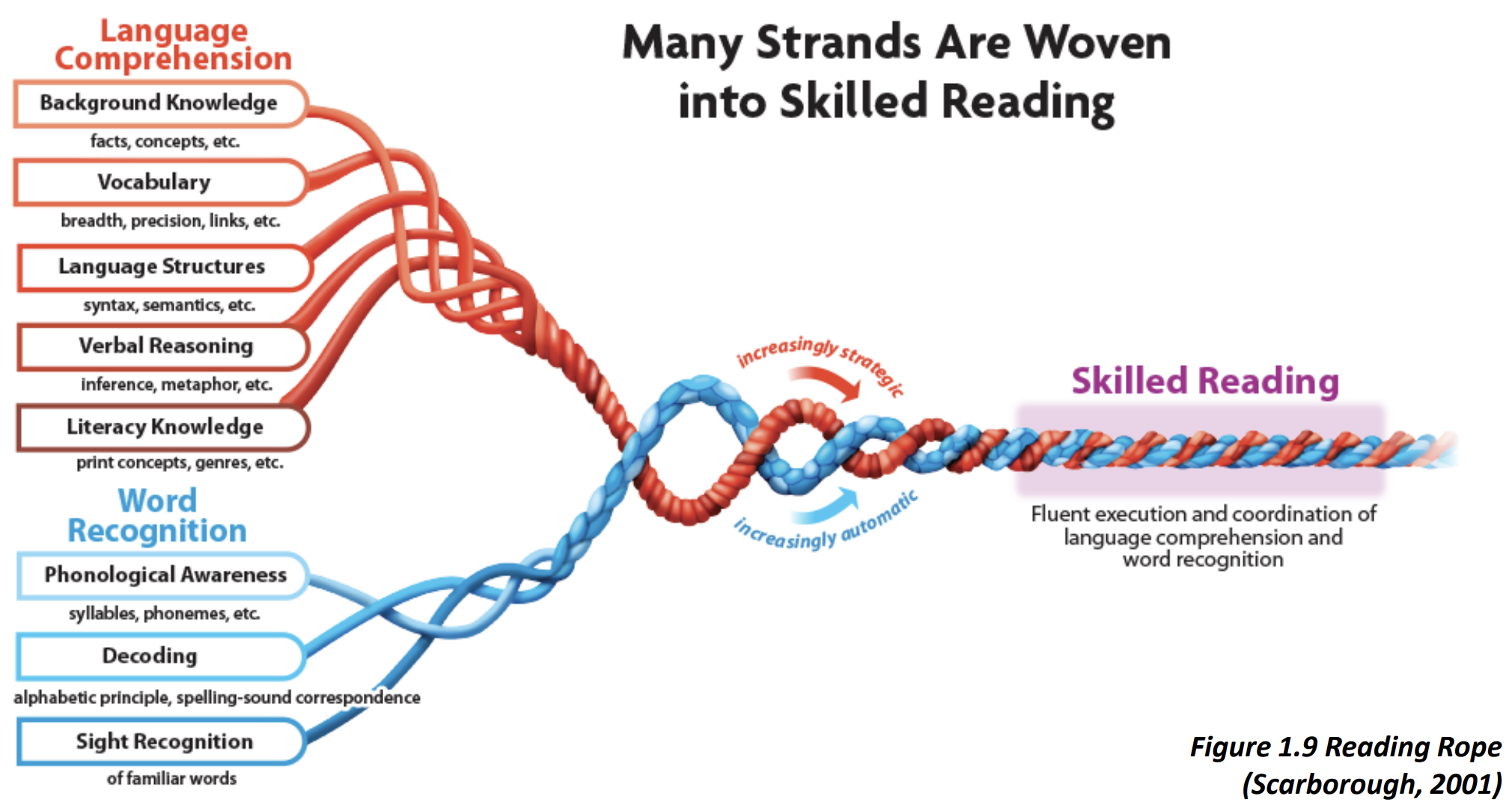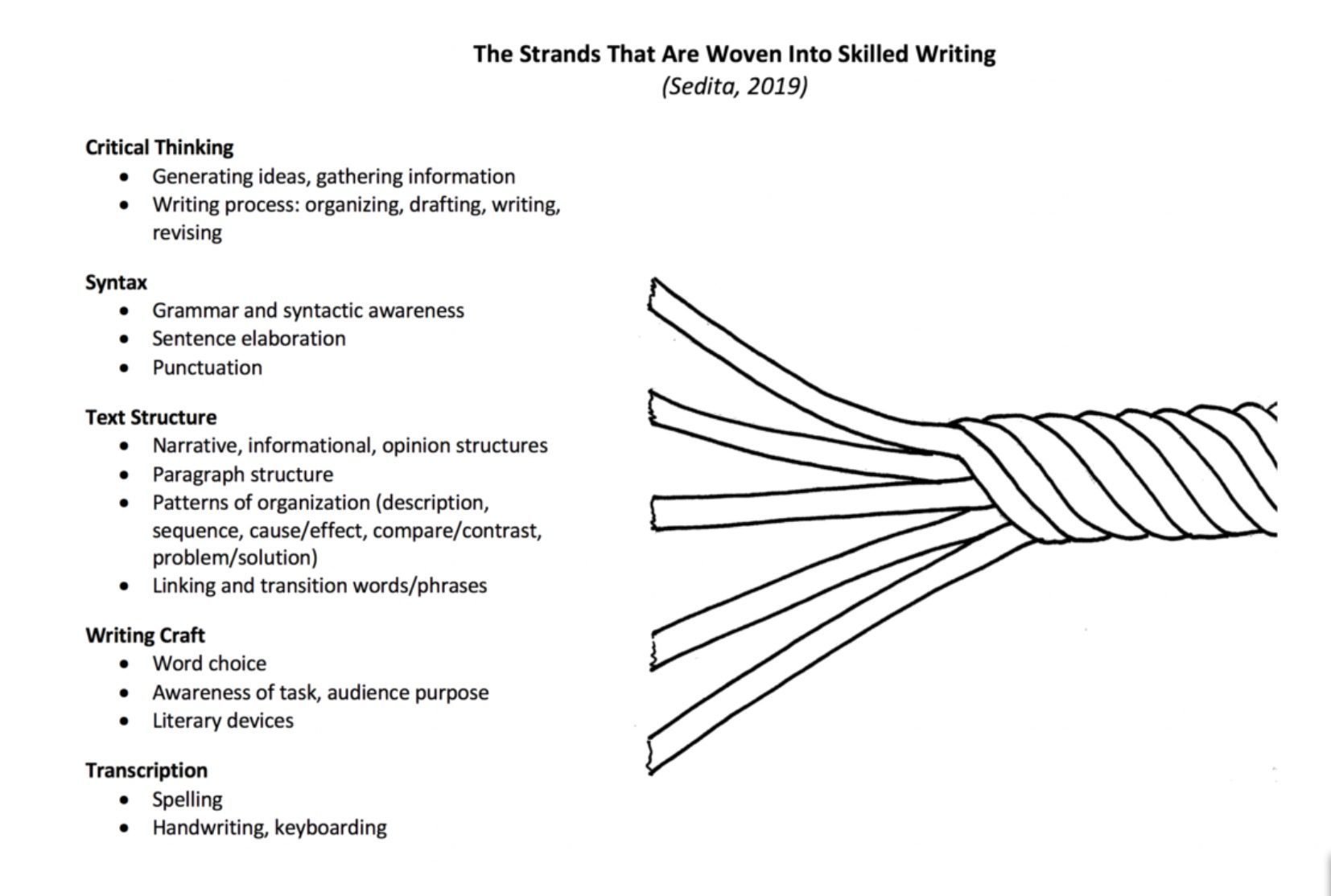Teaching literacy the right way up; Inverting the balanced literacy playbook
Access my recent presentation on this topic at Sharing Best Practice Ballarat.
The typical focus under Balanced Literacy
One of the most striking hangovers from the Whole Language (WL) era is the sense that everything with teaching literacy has been upside down. What I mean is that WL and its cousin Balanced Literacy (BL) has prized certain aspects of reading and writing as explicit and front-and-centre (think comprehension strategies), whilst relegating other facets to be taught incidentally and implicitly. This has occurred, ironically, as the research evidence has called for a complete inversion of these priorities.
The typical focus of reading and writing according to balanced literacy
At the pinnacle of BL’s explicit focus has been comprehension strategies and their repetitive practice year in, year out—on any text or topic, with an emphasis on thinking “like an expert reader”. For writing, BL has held up whole text writing as the explicit priority above all, often leading to the endless assigning of whole text writing—but again agnostic of topic or knowledge area.
Graduating from outright bans during the whole language years, in BL approaches, the explicit teaching of phonemic awareness, phonics, fluency, spelling, handwriting and sentence construction were still cordoned off to only a minor role. Such “low-level skills” were typically taught in the broader explorations of authentic texts, incidental reading opportunities, “word work”, and mentions of “writing choices”. In-depth and rigorous teaching of content knowledge (e.g. from history, geography, and science) did not feature strongly in BL classrooms either.
Attempting to invert the Balanced Literacy PLaybook
Luckily, many schools are taking a closer look of the Sciences of Reading and Writing, and are noticing this paradigm needs a complete flip.
Rather than balanced literacy truisms, it is helpful to think about reading and writing using research-informed models such as the reading rope, and the writing rope.
Inverting the Balanced Literacy playbook
But how do I teach these?
With these models in mind, how best can teachers and school leaders ensure all these components are taught coherently and effectively, with a proper emphasis on what should be explicit and what can be more embedded or implicit?
I thought it would be prudent to share some research informed principles that I synthesised for the La Trobe Master of Education students last week:
Some reading and writing skills are constrained, and are best taught explicitly, and often in isolation to reduce working memory demands (e.g., phonemic awareness, word reading, spelling, handwriting, fluency, some sentence level learning).
Other reading and writing skills are best developed in context, or alongside other literacy activities (e.g., knowledge building, vocabulary instruction, writing paragraphs, analysing and creating texts)
It is important to build knowledge in all the academic disciplines because of the role that knowledge plays in facilitating comprehension
Having clear scopes and sequences helps to ensure that students build upon their skills each term and each year, and that the sequence of learning is coherent
Teaching comprehension strategies (e.g., finding the main idea, summarising) is useful but only for a small amount of instruction (longest research is for approximately six weeks); It’s best to teach these in the context of knowledge-rich units of study.
So, to achieve this change of thought and practice in the teaching of literacy, there is a significant shift that needs to take place. What we have been teaching incidentally in the BL era (e.g. phonics, phonemic awareness, handwriting, spelling, see below for more) now needs to be explicit and systematic, and may likely be decontextualised to reduce the strain on working memory. Inversely, that which was the explicit and direct focus of teaching (e.g. writing texts and paragraphs and comprehension strategies) needs to play a more fluid and incidental role in the context of rich discussions about content knowledge, literature, and varied texts.
It’s a big shift to move from a Balanced Literacy Playbook to one based on the Sciences of Reading and Writing. Some reading and writing skills are constrained, and are best taught explicitly, and often in isolation to reduce working memory demands (e.g., phonemic awareness, word reading, spelling, handwriting, fluency, some sentence level learning).
Other reading and writing skills make more sense to develop in context or alongside other literacy activities (e.g., knowledge building, vocabulary instruction, writing paragraphs, analysing and creating texts)
Do I have to change everything at once?
Inverting such fundamental beliefs and practices is a years-long process, and should not be taken lightly. The volume of work that schools must put in is substantial, in order to turn that hourglass the right-way up. You, of course, can start with small changes first.
To hear about some journeys of schools and school leaders, check out the Principals’ Forum on Think Forward Educators, and feel free to pass recordings and PL on to your own school leaders.
Flipping your literacy instruction is no easy feat.
Take your time. be kind to yourself, and reach out for help!
Thanks for visiting, and see you next week!
Access my recent presentation on this topic at Sharing Best Practice Ballarat.
ABOUT me
Dr Nathaniel Swain
I am a Teacher, Instructional Coach, Researcher and Writer. I am passionate about language, literacy and learning, and effective and engaging teaching for all students.
I teach a class of first year foundation students, in a space affectionately known as Dr Swain’s Cognitorium. I also work as Science of Learning Specialist in my school.




